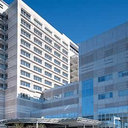Serine protease inhibitor Kazal type 1 promotes proliferation of pancreatic cancer cells through the epidermal growth factor receptor.
Ključne riječi
Sažetak
Serine protease inhibitor, Kazal type 1 (SPINK1) is expressed not only in normal human pancreatic acinar cells but also in a variety of pancreatic ductal neoplasms. There are structural similarities between SPINK1 and epidermal growth factor (EGF). Hence, we hypothesized that SPINK1 binds to EGF receptor (EGFR) to activate its downstream signaling. We first showed that SPINK1 induced proliferation of NIH 3T3 cells and pancreatic cancer cell lines. We showed that SPINK1 coprecipitated with EGFR in an immunoprecipitation experiment and that the binding affinity of SPINK1 to EGFR was about half of that of EGF using quartz-crystal microbalance (QCM) technique. As expected, EGFR and its downstream molecules, signal transducer and activator of transcription 3, v-Akt murine thymoma viral oncogene homologue, and extracellular signal-regulated kinase 1/2, were phosphorylated by SPINK1 as well as EGF. To determine which pathway is the most important for cell growth, we further analyzed the effect of inhibitors. Growth stimulation by EGF or SPINK1 was completely inhibited by EGFR and mitogen-activated protein kinase/extracellular signal-regulated kinase kinase inhibitor but not by Janus-activated kinase and phosphoinositide 3-kinase inhibitors. To further analyze the clinical importance of SPINK1 in the development of pancreatic cancer, we examined the expression of SPINK1 and EGFR in pancreatic tubular adenocarcinomas and pancreatic intraepithelial neoplasm. Both SPNK1 and EGFR were coexpressed not only in the early stage of cancer, PanIN-1A, but also in advanced stages. Taken together, these results suggest that SPINK1 stimulates the proliferation of pancreatic cancer cells through the EGFR/mitogen-activated protein kinase cascade.



